Oyster reef-associated fauna include both resident and transient species that are sampled by different methods.
Resident Species
Residents typically include decapods, molluscs, and infaunal organisms that can be sampled by excavating quadrats, implanting sampling trays or using small lift nets in the reef matrix (see Figure). Collected organisms are then separated from shell and mud on a 1.0 or 0.5 mm mesh sieve, identified to species or lowest possible taxonomic level and counted. Biomass or wet mass of numerically abundant residents (e.g., Geukensia demissa) or of speciose smaller invertebrates difficult to identify (e.g., polychaetes, amphipods) often are measured as an alternative to enumerating all individuals. The sampling of resident species is one of the most time consuming metrics to be collected from reefs requiring both the technical expertise to identify individuals to species and the time to process what are often large numbers of individuals. Data from resident taxa were viewed uniformly by workshop participants as one of the most valuable to collect to address the wider ecological questions associated with oyster reefs.
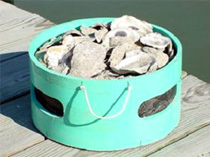
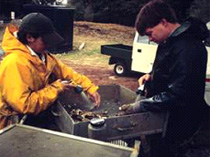
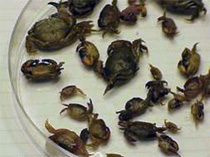
Examples of resident species sampling with a tray full of oyster shell (top left) to be planted within a reef, sieving and collecting fauna from a sampled quadrat (top right), and organisms retrieved from a sample (bottom) (photos from M. Luckenbach and P. Ross).
Transient Species
Transient species are individuals that move onto and off of reefs usually over a predictable time interval (e.g., 6 h for intertidal reefs). Many transient species utilize reefs as a source of food (e.g., blue crabs) or shelter (e.g., gobies). The transient fish and crustacea are sampled with a variety of techniques including lift nets, drop nets, seines, minnow traps, Breder traps, crab traps, shell trays, gill nets, throw traps, trawls, diver observations, and videography (see Figure). In circumstances where reefs are located within spatially distinct tidal creeks the entire creek may be block-netted in order to sample transient species. Sampling is the most problematic aspect of determining transient species numbers. Many netting techniques induce species escape behaviors and suffer from the haphazard loss of individuals. Lift nets also are impractical for subtidal reefs in depths greater that 1-2 m. The use of traps can provide information on the relative abundance of selective taxa, especially when many sites simultaneously are sampled. However, trap data should be interpreted with care as there are situations when biases make even relative comparisons among reefs difficult. Perhaps the most efficient collection method in intertidal systems is the lift net, deployed surrounding the reef and lying on the sediment until drawn over the reef at high tide, but the labor required and long wait periods – set-up at low tide, pulled up at high tide, sampled the next successive low tide – makes any study using lift nets a challenge. Irregardless of the difficulties, transient species data can provide a unique ecosystem and/or landscape scale perspective highlighting the additional value of oyster reefs.
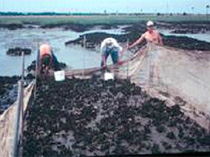
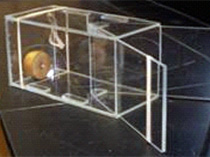
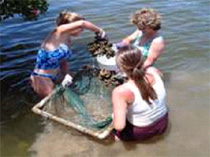
Sampling technique examples for transient species: lift-net (top left) sampling in progress (photo from L. Coen); Breder trap (top right) to sample reef fishes (photo from M. Posey and T. Alphin); small (1 m2) lift net (bottom) sampled on ebbing tide (photo from A. Volety and G. Tolley).







